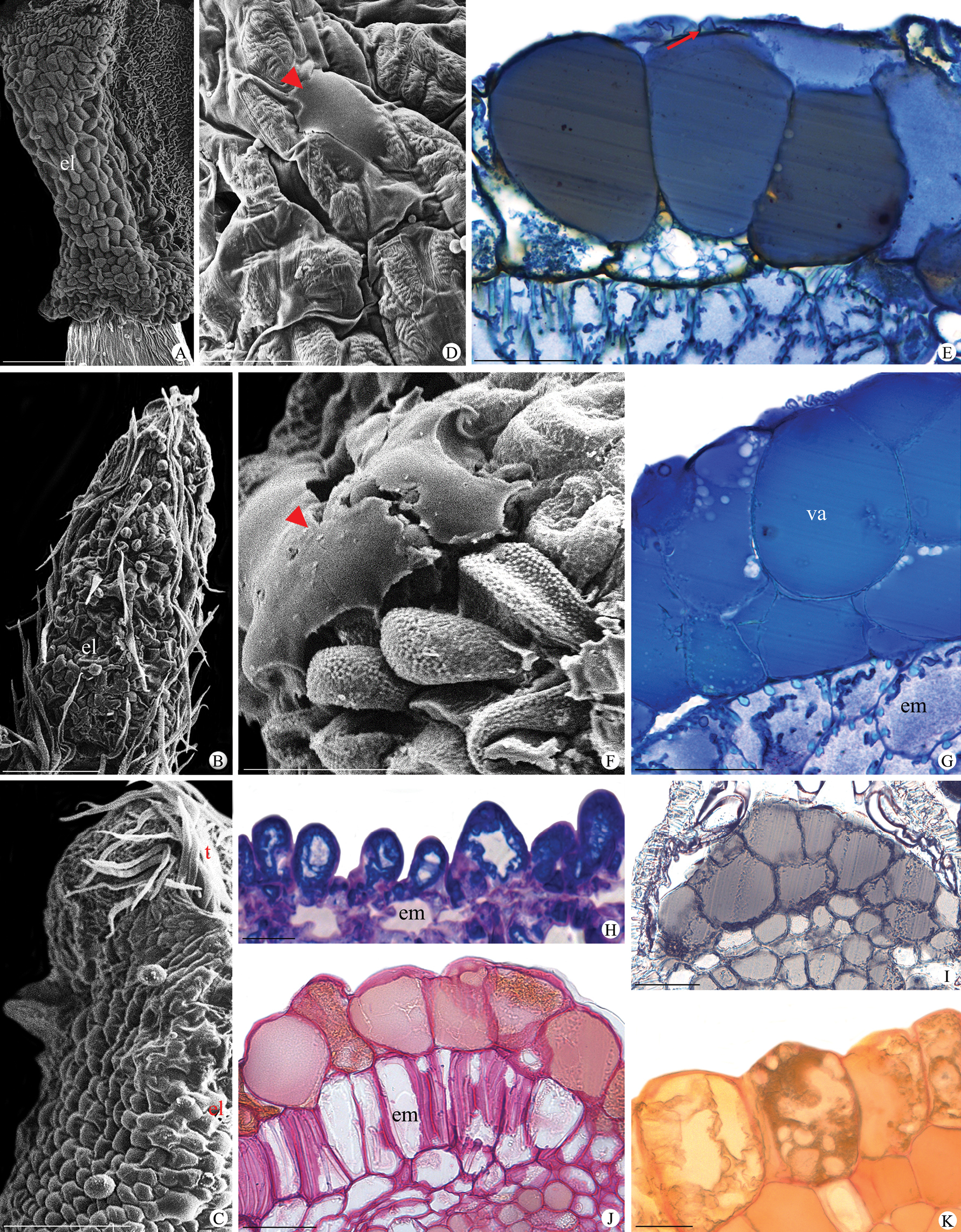
|
||
|
Staminal elaiophores of Malpighiaceae species A smooth globose cells comprise all the connectives of Lophanthera lactescens B in Niedenzuella lasiandra, non-secretory trichomes occur in all the anther epidermis, while in C Carolus chasei, they permeate only the anther’s edge D Pterandra pyroidea. Detail of the exudate of the globose epidermal cells (arrowhead in D, F) E the unicellular globose epidermal cells have a dense vacuole in Amorimia rigida; note the cuticle detachment (arrow). (F–I) Callaeum psilophyllum. The latter species have elaiophores formed by overlapping globose epidermal cells with a dense vacuole in the connective F, G and unicellular trichomal elaiophores in the anther epidermis H The unicellular trichomal elaiophores exhibit lipid droplets in the protoplast H. J, K Bunchosia pernambucana I–K fatty acids, polysaccharides and phenolic compounds constitute the secretion inside the cell. el = elaiophores; em = endothecium; t = trichomes; va=vacuole. SEM (A–D, F). TBO+p-phe (E, G–H). AA (J). PAS (J). VR (K). Scale bars: 250 µm (B); 200 µm (A, C); 100 µm (D, F); 50 µm (E, G–K). |